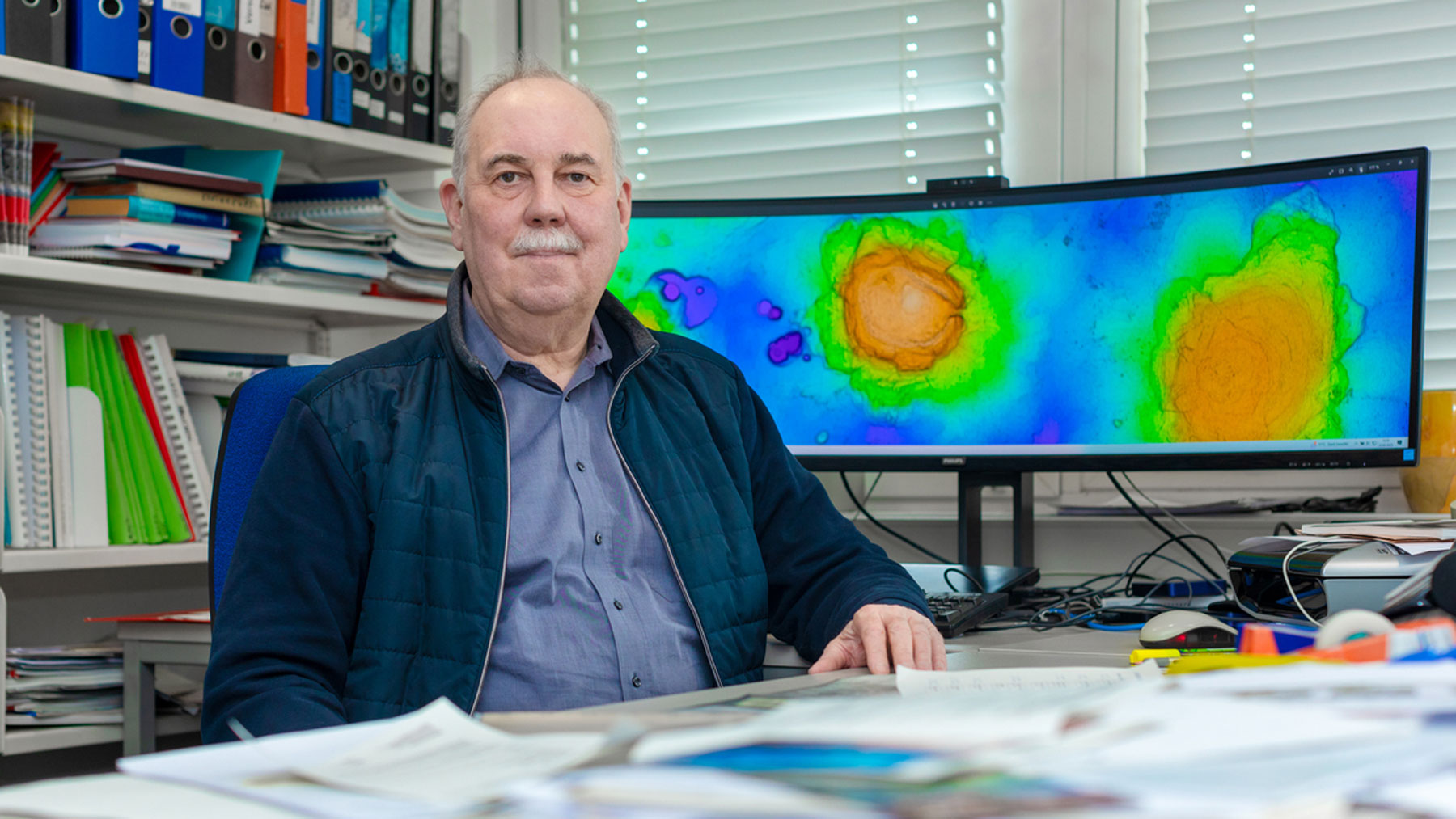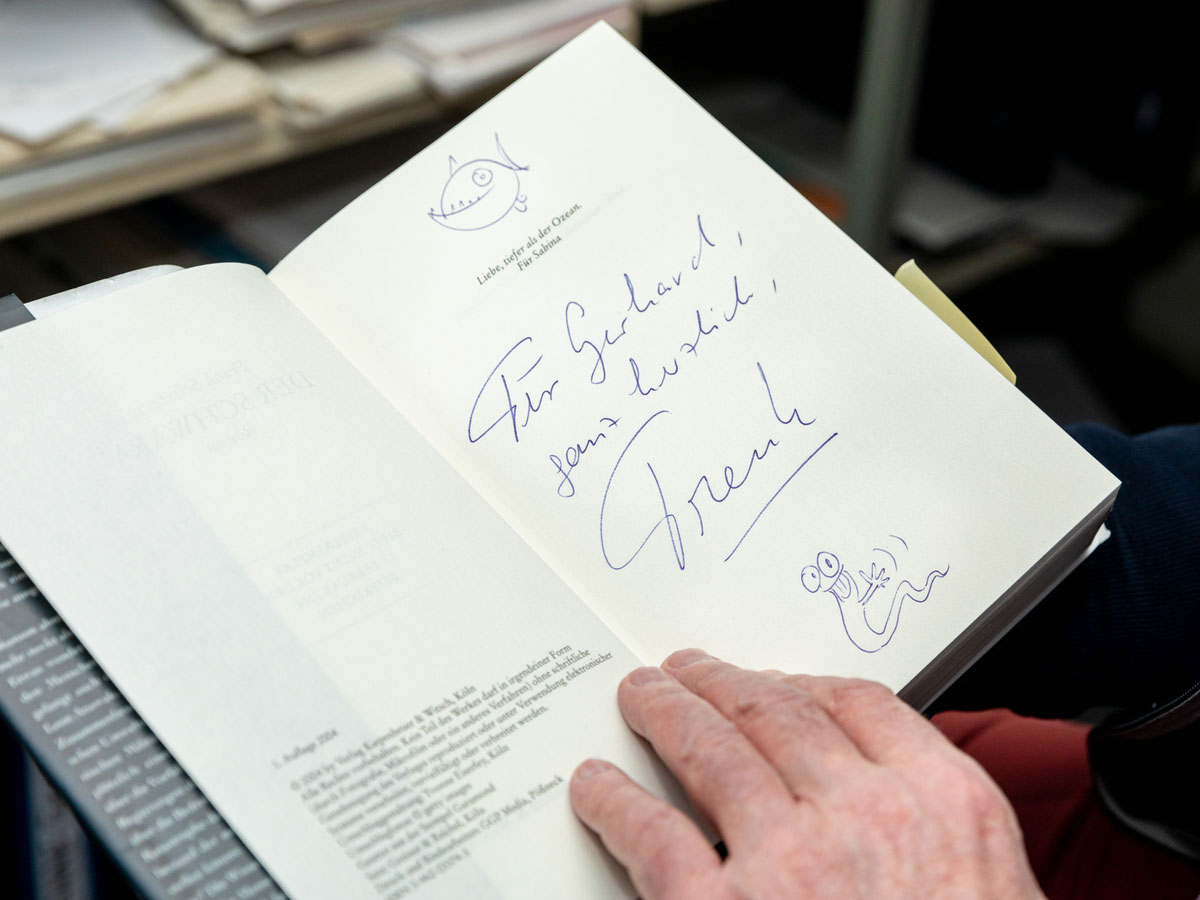
© Matej Meza / Universität Bremen
“The Swarm” – Bremen Marine Geologist Gerhard Bohrmann as Fictional Character
Learn how much expert knowledge from Bremen is involved in Frank Schätzing’s bestselling novel.
Frank Schätzing’s novel “The Swarm” was published in 2004 and became a global success. The broadcaster ZDF has turned it into a TV series. The Plot: An unknown deep-sea creature attacks humanity. Nature strikes back. Aggressive whales, dangerous ice worms, a tsunami – scientists fight the catastrophe. One of the novel’s characters, Gerhard Bohrmann, is a professor of marine geology at the University of Bremen. We spoke with him at the start of the series.
Your research is on methane hydrates and seafloor geology; and you provided the author with scientific advice. What was it like working with Frank Schätzing?
I spent two days advising Frank Schätzing. He came to my office and was remarkably well-informed about the state of marine research. He had read a lot on the topic. That was quite impressive. His main interest was to discuss his ideas with me. In knew that he had planned to write a novel. I enjoyed the exchange with him very much and had a lot of fun. He included much of what we talked about in the novel and we have been friends ever since.
You were not only scientific advisor, but also became one of the key characters in the novel.
At one point, while I was leading a research expedition in the Pacific, Frank wrote to me and asked if I would mind if he included me as a character in his novel. I did not mind provided that my character would also be a scientist in the novel and that I would be allowed to read the manuscript beforehand. I did not hear anything back for a while, until a journalist called me and asked to interview me. This is how I learned that I was a character in the novel – and that he had my actual name.
And what was it like for you to read about your character?
It was very surprising, but also pretty awesome. First, I found it exciting to read how I was portrayed. Also, I received calls from people I hadn’t spoken to in years. My students also asked many questions. My scientific lectures, which are usually attended by 30 or 50 people, were suddenly attended by a hundred. It was a pretty crazy time.

© Matej Meza / Universität Bremen
Do you recommend the novel for scientists and students as well?
I would not say: Read the book so you can learn about science. It’s a novel, not a textbook. The book, however, does spark interest in marine science. It is interesting in order to understand how we work on research ships and in laboratories. A layperson won’t be able to distinguish what’s real and what’s fiction. It is, after all, a science fiction thriller and, of course, many things are exaggerated. That is fine. You just need to be aware of this. Young people often ask me: “What do I have to study in order to become a marine scientist?” Then I always explain that you do not study that right from the outset. You will have to go a long way round. First, you will have to study the basics of natural sciences, such as physics, mathematics, and chemistry – and afterwards biology, geology, or oceanography.
The TV series, by contrast, paints a completely different picture of the profession; one that doesn’t correspond to reality at all. For example, one of the important protagonists is a PhD student who is in charge of a research unit on the Shetland Islands all by herself for a period of many months. For insurance reasons alone, a German research institute would not allow this.
What is your scientific opinion about “The Swarm”?
There is nothing wrong with it, but, of course, you have to remember that it is science fiction. I gave lectures, which were met with great interest, on the question of what is fiction and what is science in “The Swarm” novel. Many things in it are scientifically sound. For example, one topic is methane hydrates, something I’ve been researching for over 25 years. Methane hydrate, a solid form of methane gas with water molecules, is a concentrated chemical compound in marine sediments that has long been traded as an energy resource. If methane hydrates, which exist primarily on continental margins, are extracted, then there is a risk of landslides with a potential for tsunamis. The tsunami is a particularly vivid example: When the devastating tsunami hit Thailand, survivors subsequently reported that they knew how to act and save themselves from reading “The Swarm.” In contrast, Frank Schätzing made the ice worms, which really are found in the Gulf of Mexico, bigger for his book, equipped them with strong jaws, and placed them in Norway and Japan.
What do you think of the adaptation? Frank Schätzing has distanced himself from it.
The TV series definitely has a very good cast. My character in the novel was turned into a professor of marine biology played by the great Barbara Sukowa. Other than that, I personally would have preferred a movie to a multi-part series because of the overall storyline. Because the episodes always have to follow a certain dramatic structure and have a cliffhanger at the end. In a TV series, of course, it is easier to identify scientific misrepresentations than in a book, because now images illustrate what was previously left to the reader’s imagination. In any case, I am going to prepare a lecture in which I will use film clips to explain what cannot possibly correspond to reality. In one scene, for example, some free gas in the ocean shoots up several meters into the air like a geyser. This would never happen that way. It made me laugh.
Further information
The ZDF series will be available in the ZDF Mediathek from February 22 and will run on prime time television from March 6. Further information on the Cluster of Excellence „The Ocean Floor – Earth’s Uncharted Interface“ can be found on the website of the MARUM.